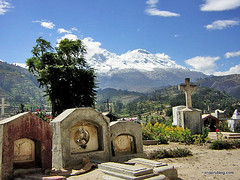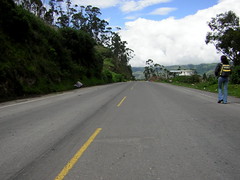Meteorite hits Peru, irradiates hundreds
No-one could quite believe, that of all the open space in the world, a meteorite would rip a hole in the ground metres wide outside a small Peruvian town in Puno, irradiating its population of 500 families.
It doesn’t quite sound real, but that’s exactly what happened 2 days ago, and confirmed today by Peruvian geologists.

Locals in towns south-east of the city of Puno, towards the Bolivian border reported seeing a orange-glowing object roar across the sky before plummeting into the earth creating a crater several metres wide. Despite this, and a small earthquake it caused, no-one was immediately hurt and it only became a concern when as many as 500 families, living in and near the town of Carancas where the meteorite hit, reported symptoms of possible radiation poisoning. Vomiting, dizziness and headaches were reported, as well as a strange lingering smell in the air.
Geologists and Physicists from several Government agencies and universities are either travelling to the region or expecting samples to study. Collecting samples has itself caused problems – several police officers charged with the task have been admitted to hospital.
UPDATE (2:50pm – 18 Sept):
Regional Director of Health for the Puno region has confirmed that no more than 150 people are being treated for coming into contact with the meteorite. Jorge López Tejada also confirmed that those sick were those who visited the crash site coming into closer contact with fragments and the strange odour. Apparently no cases of illness are critical, but authorities worry long term health damage may have been caused.
UPDATE (6:25pm – 18 Sept):
Teams of medics have arrived from Lima and Arequipa to provide assistance to locals suffering the affects of the meteorite crash. The strong odoured gas that has filled the air seems able to penetrate protective masks.
UPDATE (7:10pm – 18 Sept):
Scientists have confirmed that the meteorite was a chondrite and shouldn’t be radioactive in any way. The crater has been measured to be 17 metres wide and 5 metres deep.






![Ice cream culture in Peru [Featured]](http://anaperuana.com/wp-content/uploads/2009/03/blog_ice_cream_001.jpg)



